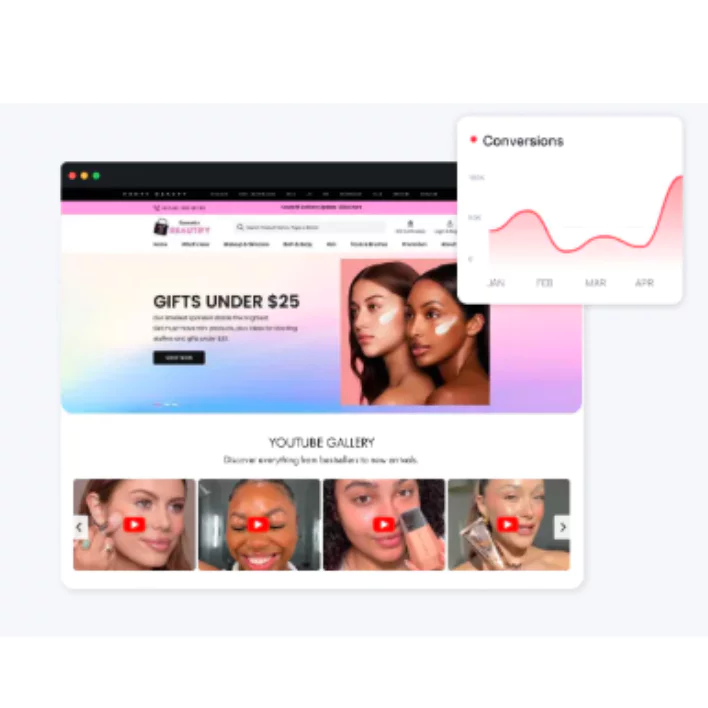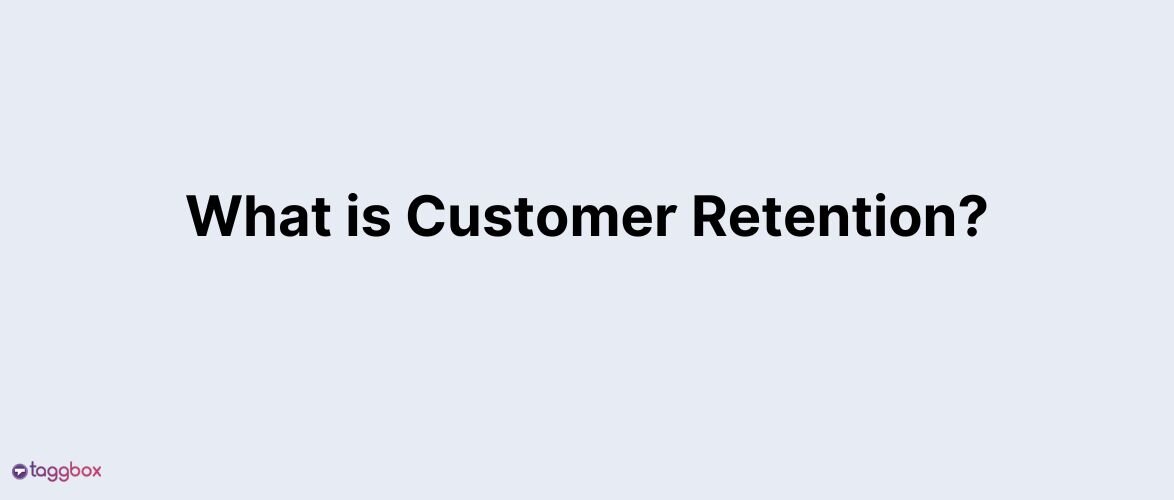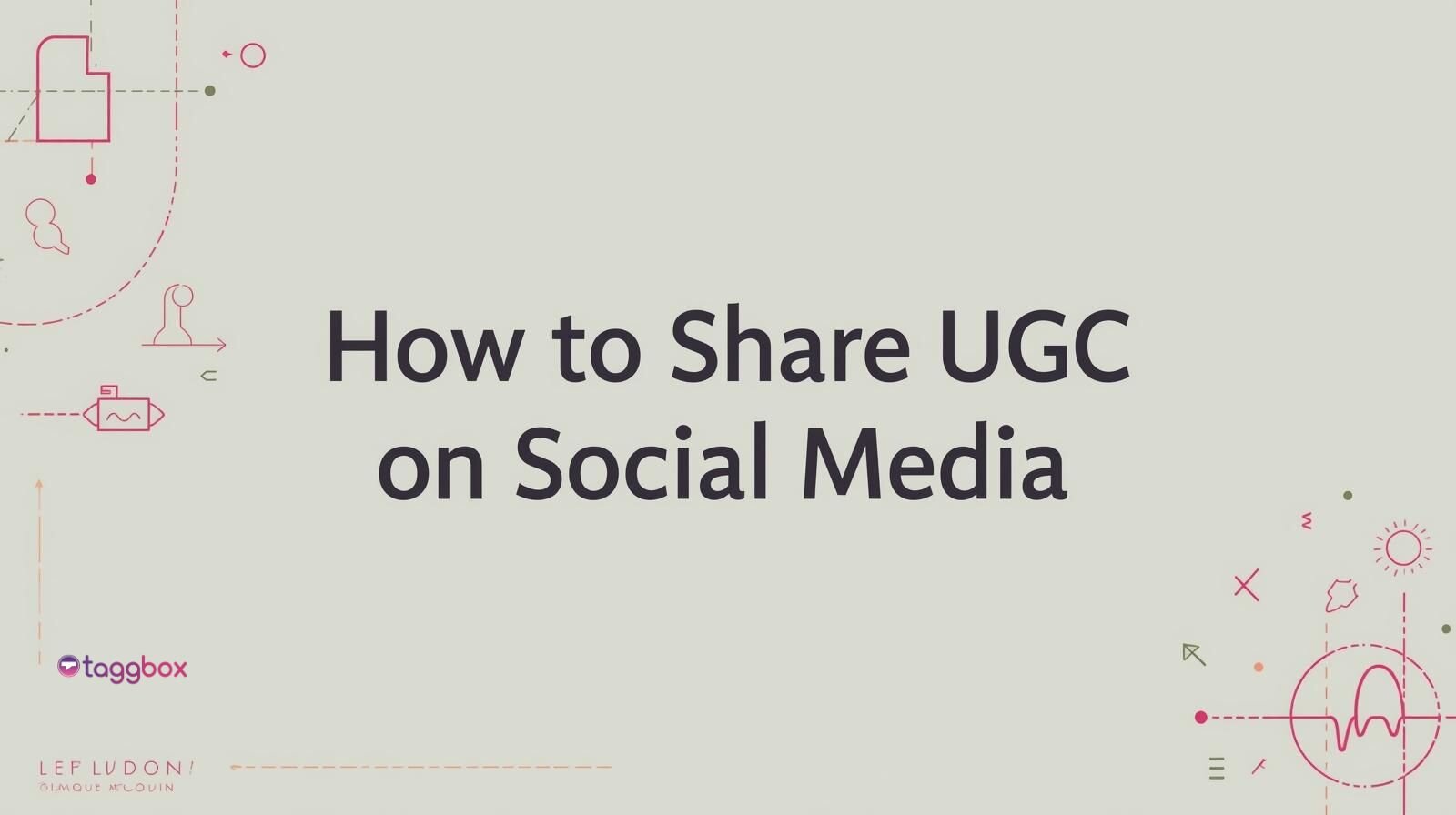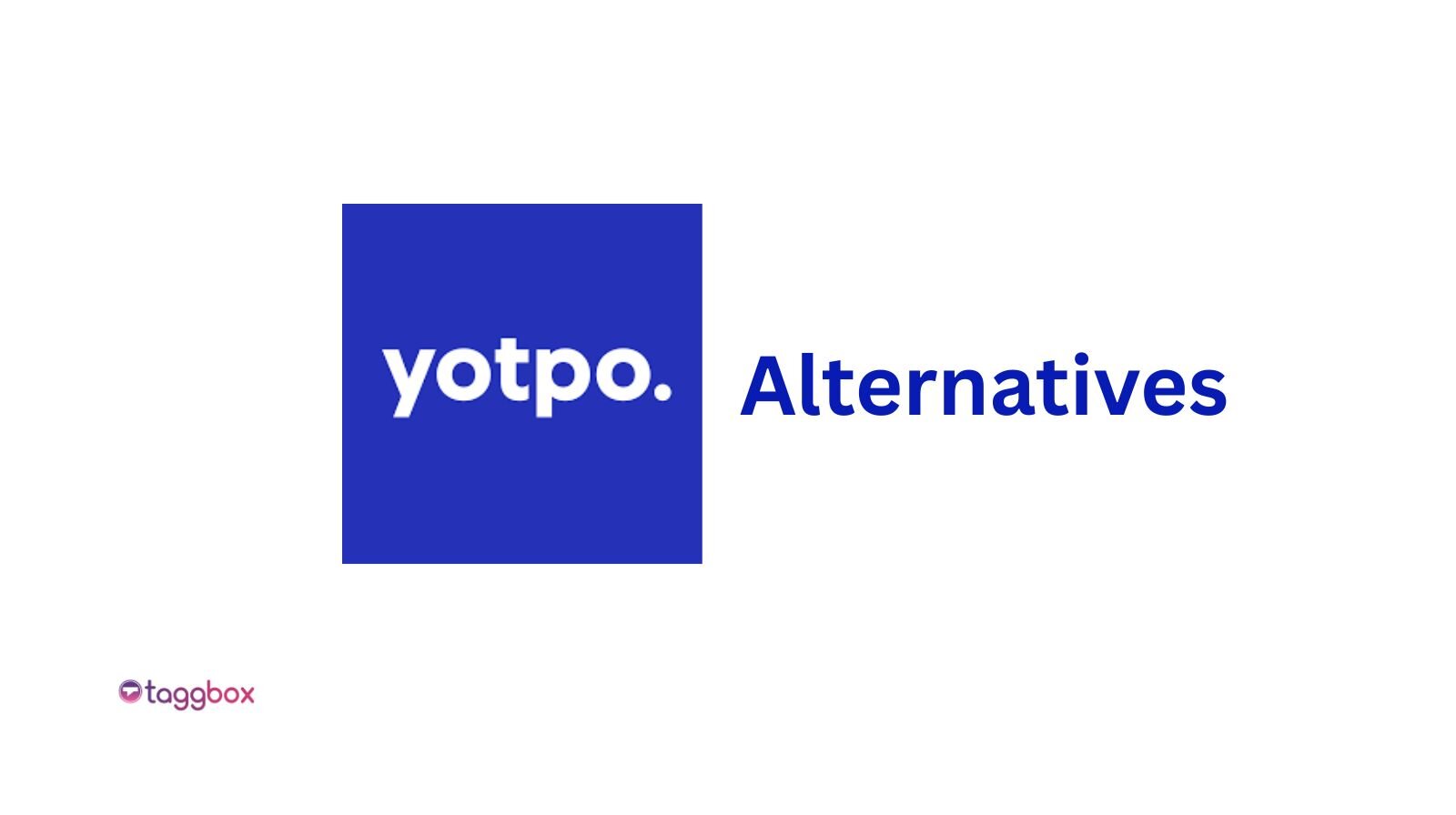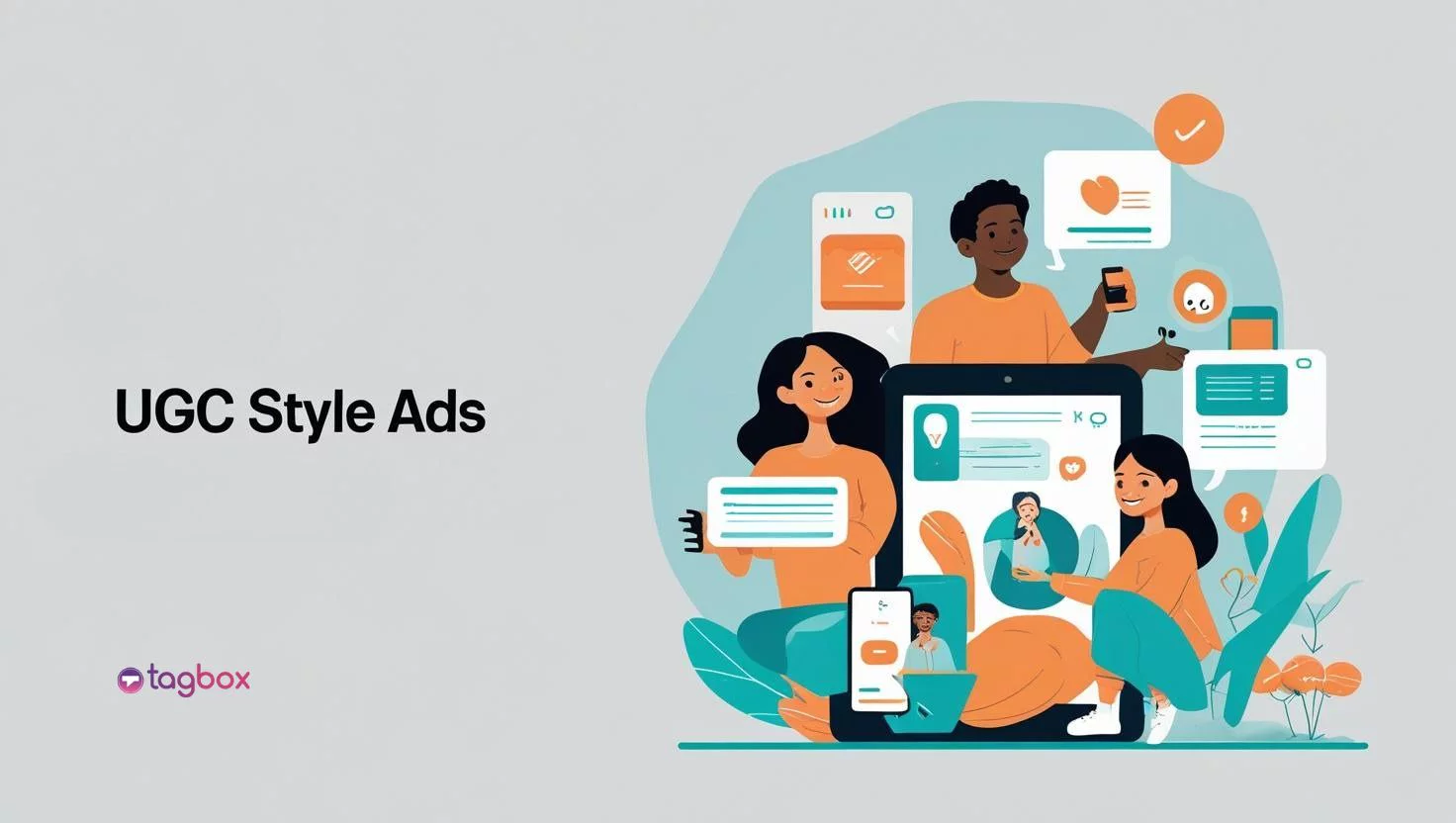Read summarized version with
In the last decade, visual content has exploded, unlike at any other time in history. The power of visuals in storytelling is undeniable. In fact, today’s consumers crave visually engaging experiences so much that brands are constantly battling against providing for this ever-increasing visual appetite.
User-generated content is helping brands sell more, as it is the next best thing after word-of-mouth marketing. 85% of the people find UGC more compelling than brand-generated content, and close to half of the market leaders rely on it.
But, as promising as this strategy might be, brands are constantly struggling to inspire their audience to create content that speaks of them.
If you, too, have been looking for ideas that can help in the production of the UGC, then you have come to the right place. Keep reading to figure out which UGC creation strategy would work the best for you.
Why Is UGC Important?
The fact that compelling content prompts an instant response cannot be denied. But now marketers are stretched thin in the process of pondering upon and creating content that captivates the attention of consumers.
Here, leveraging UGC can potentially satisfy the growing content crunch and the appetite of the users for authentic content. Thanks to technology and social media, sharing opinions, experiences, and views has become so easy. This is an attributable reason why the behavior of the consumers has made a shift from being passive to active.
They look forward to experiences more than any brand-led selling tactic. Talking about numbers, 73% of the users consider transparency more important than the product price when it comes to investing in a brand. Showcasing UGC can potentially provide for this requirement of the user.

The need to leverage your users’ voices to sell better is pressing for the following reasons:
- Social media is influencing users at large. According to a report by Deloitte, the probability of consumers spending on purchases increases by 4 times after checking out a recommendation on social media.
- 70% of the consumers consider reviews given by the users of the brand before making a buying decision.
- 92% of the consumers trust UGC over traditional methods of marketing.
- Users appreciate and like to be a part of the journey of those brands that are humane in their marketing approach.
Users and the content created by them decide the future of the brand, as fetching trust is getting rather difficult, especially because the number of brands operating in a digital setting is growing at lightning-fast speed.
Hence, inspiring the creation of UGC and resourcing it further to various marketing touchpoints of the brand has become more important than ever. But, if you have been stuck at the former step, read ahead to find some interesting ideas that can encourage your users to create content for you!
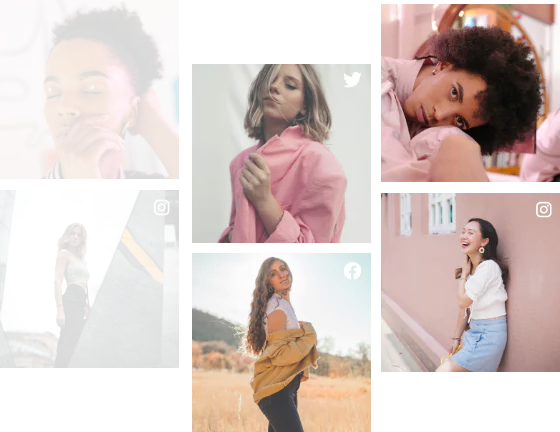
Get UGC for Your Brand in 4 Easy Steps
Ideas to Produce More UGC for Your Brand
1. Identify Consumer Trends
When you have an overview of the visual content shared by your audience, the pattern and culture of your core audience become evident, and when you analyze the types of photos that your customers are sharing, you can strategize better.
But before you begin, here are a few points to consider:
- Who do you think can probably share your content the most?
- What do they share photos of? If there is any particular product or collection that is dominating the conversation?
- What is the location of your customers when they share content mentioning your brand?
- Consider what situations inspire them to participate in content creation.
- Lastly, take note of the technicalities too. If they are tagging your brand naturally, or are they using your geotag? On which platform are they most active?
Once you have access to all this data, you can curate your UGC campaign and repurpose this content across your marketing touchpoints.
For instance, if you showcase your UGC campaign even after having considered all the points, you can better inspire your audience into content creation.
2. Add Digital CTA’s
To encourage your users in content creation place powerful calls-to-action in places where your customers are most likely to engage.
On Instagram, this can be your bio, location, tag, or in the caption. Other places are your website, other social media channels, blogs, etc.
Additionally, you can also engage them at the most crucial points of the customer journey, your physical store. Showcase your UGC campaign on digital screens and the content generated by users using it to motivate viewers to create content around it.
They might get motivated to document their shopping experience by looking at other users getting featured on the screens, which will further boost your brand’s reach and awareness.
3. Tap Into Influencer Marketing
Daniel Wellington collaborated with many influencers to promote its product, which further inspired many users to participate in the creation of content too. It helped the brand to successfully generate more than 800K photos and videos on Instagram.
When trying to push more consumers to create content for you, leveraging influencers’ impact on the minds of the audience can be your best bet. Further, you can provide them with specific instructions about the kind of content that you would like to see.
When users see influencers posting content in a certain way, they might also do the same.

Find the Perfect Influencer for Your Campaign
4. Host Hashtag Contests
Giveaways have always been a common strategy to build awareness of the brand, spark the interest of the audience, and encourage them to participate in the contest.
Businesses ask their followers to post on social media using their branded or any other specific hashtag, similar to a giveaway. In return for their efforts, brands reward the winners with a giveaway price.
Hashtag contests are a great way to engage audiences in your brand’s activities while igniting conversations.

Interestingly, you can use the UGC produced via the hashtag contest for later marketing purposes. Taggbox allows you to collect this UGC and display it on your marketing touchpoints to further showcase your brand’s authenticity and credibility.
5. Give Them Guidelines Around Content Creation
According to statistics, More than 50% of consumers wish that brands would tell them what kind of content to create and share.
Therefore, brands can have set guidelines to encourage users to create content for them. This will also help you curate content as per your aesthetic and appeal requirements, which is what Daniel Wellington did and achieved great success on Instagram for their hashtag campaign.
Being specific will help you in receiving better content. Additionally, users create content based on their understanding of the brand and what they think the brand will repost or repurpose. If they know exactly what they need to do, they will be better inspired to create content.
6. Host An Event
Although user-generated content is an effective way to create awareness around your products, it requires quite a lot of effort from the brands to be able to finally get users to create content from them. Here, hosting an event can ease your efforts.
Create an exclusive hashtag for your event and promote it to reach out to a wider audience. This will help in increasing the awareness of your event and gather more attendance.

The event attendees create and share pictures, which can be aggregated and displayed on event screens. When others see people getting featured on screens, they will be motivated to further produce content. Hence, letting you have more UGC.
7. Create Hashtag Campaigns
Hashtag campaigns are the ideal way to generate traffic on social media, fetch the attention of the audience, and inspire them to create content following the hashtag campaign.
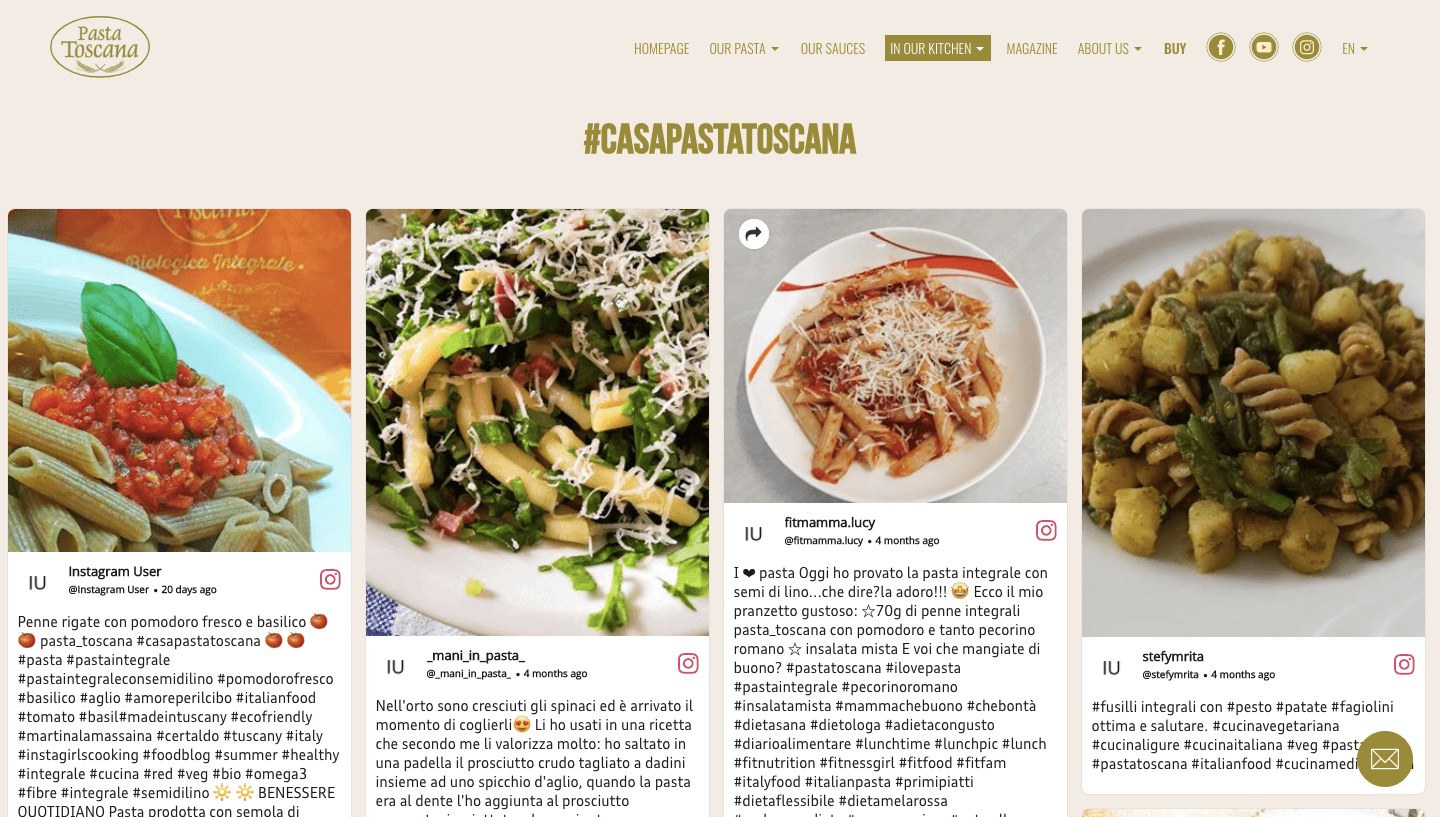
Brands can keep up with the dynamism of the audience with exclusively created hashtag campaigns and initiate brand-user interactions.
But while you brainstorm over your hashtag campaign or bring it into practice, take note of the following things:
- Be Authentic and Unbranded
Simply tweaking a hashtag isn’t going to help you much. Be authentic, relevant, and unbranded to connect to your audience better.
Another important point to note here is not to include your brand’s name in the hashtag but to maintain relevance.
- Keep it Simple
Do you remember any successful hashtag campaign that was difficult to pronounce? Assuming that was a clear ‘no’, keeping the name of your hashtag campaign easy to use and pronounce is indeed necessary to encourage more participation.

Make Your Next Hashtag Campaign Successful with UGC
8. Give Credit while Reposting on Social Media
When you’re sharing someone else’s content on social media, it’s essential to give credit where it’s due.
It’s not just about showing respect for the original creator; it’s also about maintaining transparency and building trust within the online brand community.
To do this, use tags or mentions to attribute the content to its source. This simple act not only honors the hard work of the content creator but also encourages positive relationships and potential collaborations.
In the world of social media, ethical sharing is a fundamental practice that contributes to building a supportive and respectful online presence.
9. Highlight Customers on the website
Highlighting customers on your website is a powerful way to showcase the value and loyalty of your customer base. Featuring customer stories, testimonials, or user-generated content on websites gives a sense of community. It encourages them to generate more content to get featured on the website. Also, customer stories can engage new audiences emotionally, making your brand more relatable.

To effectively highlight customers on your website, create a dedicated section or page for customer stories and use compelling visuals and narratives to tell their stories authentically.
10. Monitor Fresh Content With the Right Tools
Monitoring fresh content with the right tools is essential for staying up-to-date with online discussions and mentions related to your brand or industry.
By using social media listening tools you can easily streamline this process effectively. It allows you to monitor social media conversations, track brand mentions, and analyze sentiment.

With real-time data and sentiment analysis, you can respond promptly to customer feedback and identify emerging trends.
By utilizing such tools, you can proactively manage your online reputation, identify opportunities for engagement, and keep abreast of emerging trends and conversations relevant to your brand.
This enables more informed decision-making and enhances your ability to engage with your audience effectively.
11. Get Direct UGC with SnapUp
Taggbox’s SnapUp is an innovative feature designed to empower users to share their genuine opinions and experiences effortlessly.
This feature eliminates social media barriers, allowing users to contribute authentic content without any hindrances.
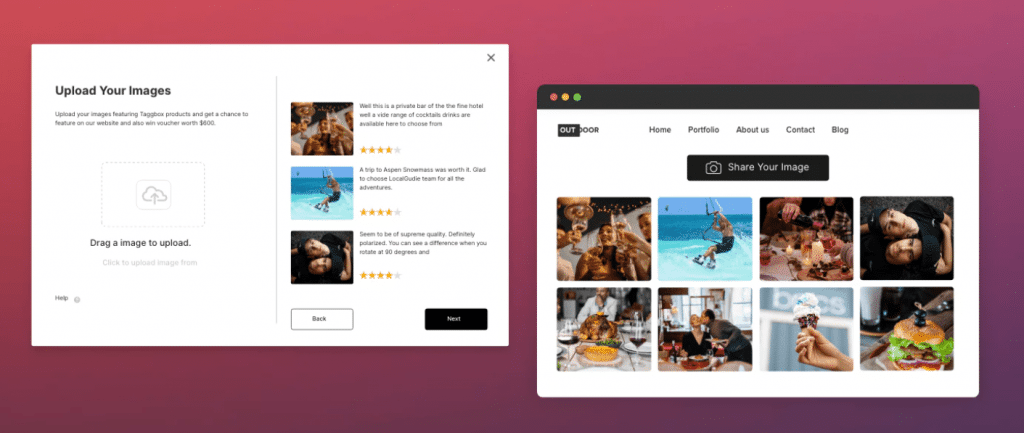
SnapUp enables users to directly share/upload visuals, including product reviews, service feedback, and brand ratings, across various marketing channels.
This feature simplifies the collection of user-generated content (UGC) and offers numerous advantages:
- Insight into User Preferences: UGC reveals what customers seek from your products/services, aiding in strategizing marketing efforts.
- UGC Hub: Collect and curate genuine UGC generated by users, which holds greater credibility than influencer content.
- Private Campaigns: Encourage user content creation directly on your website, igniting user inspiration.
- Rights Management: Secure implied content rights for the UGC shared through SnapUp.
SnapUp simplifies user interaction, enhances engagement, and empowers your customers to contribute directly to your brand’s online presence, building trust and fostering user connections.

Get UGC Direct to Your Dashboard
12. Offer them Discounts or Freebies
To encourage customers to produce user-generated content (UGC), consider offering discounts or freebies as incentives. Launch contests, giveaways, or social media challenges where participants can submit content related to your brand in exchange for the chance to win rewards.
Encourage product reviews & ratings with photos or videos and provide discounts or free gifts to reviewers. Implement exclusive membership programs with UGC rewards, create limited-time promotions for sharing experiences, or offer personalized rewards for high-quality UGC.
When implementing discounts or freebies, it’s essential to:
- Clearly communicate the terms and conditions of the offer.
- Set a clear expiration date to create a sense of urgency.
- Ensure that the discount or freebie aligns with your brand and target audience.
- Monitor the impact of the promotion on your sales and customer engagement.
Remember, while discounts and freebies can be powerful, they should be used strategically to ensure they benefit your business in the long run.
Where can you use this UGC Content?
Now you have the UGC but what you can do with this? User-generated content (UGC) is a versatile asset that can be utilized across various marketing channels to boost engagement, credibility, and brand awareness. Here’s how you can use UGC content:
1. Embed UGC on the Business Website:
- Website: Embed UGC directly on your website to showcase real customer experiences and build trust with your online visitors.
- E-commerce Product Pages: Enhance product descriptions with UGC, like customer reviews, photos, and ratings.
- Landing Pages: Use UGC to create dynamic and engaging landing pages that highlight the voice of your satisfied customers.
- Blog Posts: Incorporate UGC within your blog posts to provide social proof and enhance your storytelling.
2. Display UGC on Big Digital Screens:
- Digital Signage: Display UGC content on digital signage screens in physical locations or events.
- Events and Conferences: Showcase UGC on screens or interactive displays during events to create buzz and authenticity.
3. Emails Marketing Campaigns:
- Marketing Emails: Incorporate UGC within marketing emails to increase click-through rates and conversions.
- Newsletters: Add UGC content to newsletters to make them more engaging and relatable.
- Follow-up Emails: Send personalized follow-up emails featuring customer testimonials or reviews after a purchase.
4. Print Media:
- Brochures and Flyers: Include UGC in printed marketing materials to make them more compelling and persuasive.
- Magazine and Newspaper Ads: Enhance print ads with customer testimonials and photos.
- Product Packaging: Feature UGC on product packaging or labels to create a connection with customers.
Remember to obtain proper permissions and rights to use UGC, and always give credit to the original creators. UGC can be a powerful tool to humanize your brand, inspire trust, and encourage others to engage with your products or services.

Boost Brand Awareness by 60% with UGC
How Global Brands Encourage Customers to Produce UGC
Global brands are increasingly running UGC campaigns to secure the potency of their campaign to market their products better. Find your inspiration from them to ponder and create a UGC campaign that can help your brand fetch attention, amplify the growth of the brand, and enhance sales.
#ShotOniPhone By Apple
Nothing is more authentic and captivating than your users advocating for the product they have a fancy for.
Apple realized this after they found out that their users were disappointed over the average camera performance for pictures shot in low lights. Without any further ado, it launched the #ShotOnIphone campaign to win back the lost trust of its users in the phone’s camera.
Apple was losing a significant amount of Apple fanatics because of this issue. So, in efforts to resolve the issue, it gave a lot of prominence to the campaign, which inspired its new and existing users to take pictures in dim light with their iPhones and share them online.
The most beautiful moments of life are often unexpected. Today we celebrate photographers around the world who capture the magic in every day. #WorldPhotographyDay #ShotOniPhone by Celia Luna (IG: celiadluna) pic.twitter.com/4dnuVmLtcw
— Tim Cook (@tim_cook) August 19, 2020
These shots, which were taken by its everyday users, were then resourced on YouTube using #ShotOniPhone. Using this content created by the brand’s users was not only able to reinforce the faith of its skeptical users but also curtailed its development, production, and marketing costs. Additionally, it also made its users feel special by featuring them in Apple’s global ads campaign.
This further boosted user engagement and made the users feel that they were a part of the community while most definitely reviving the trust of the users.
#WhiteCupContent By Starbucks
In 2014, Starbucks launched the #WhiteCupContest on its Twitter handle, encouraging its customers to draw doodles on their white cups. The winning design was to be used as a limited edition template for the cup design of Starbucks.
This contest spared the users’ interest, and within the span of about 3 weeks, it received an overwhelming response, with more than 4,000 cups being sent to Starbucks by the users.
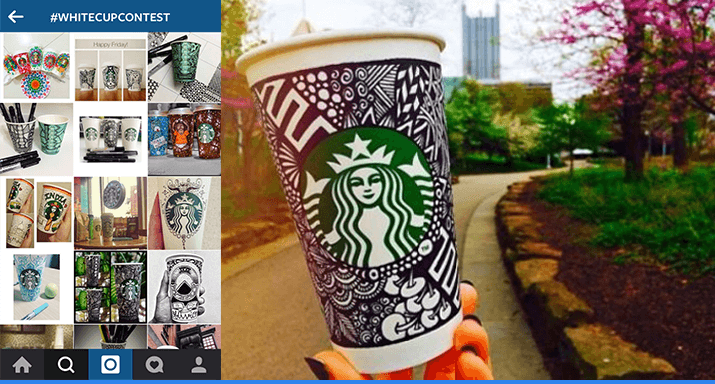
Looking at the success that this content was able to generate, the coffee giant then came up with another contest under the name #RedCupArt, which again captured massive attention on Instagram and Twitter.
Both of these UGC campaigns were able to promote the brand without having to spend a lot of money. Additionally, all this content also showcased that Starbucks appreciates its customers and their efforts taken for the brand.

Be One of These Examples with UGC
Over To You
Incorporating UGC is becoming the holy grail of marketing. The users’ need for authenticity and relatability is growing, and brands can provide for it with UGC.
But, the constant struggle of inspiring users to create it is seemingly unending. Use these strategies to get more users to create content that speaks of your brand.




